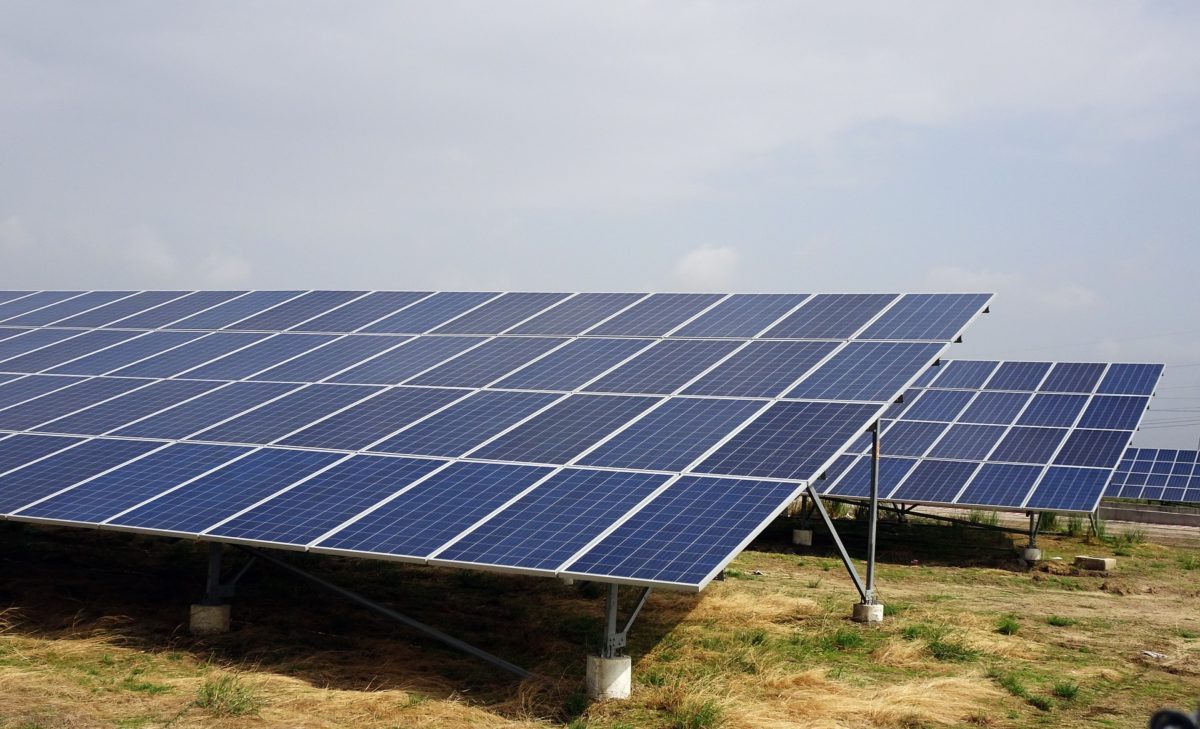From pv magazine India.
Nearly 3 GW of solar capacity was tendered for in India last month, doubling the amount seen in September and the highest capacity allocated in three months.
Around 750 MW of the PV allocated was auctioned in October, marking a near-40% jump from September's 550 MW auction total, as developers shrugged off mounting fears related to the rupee's depreciation against the dollar and the threat of safeguarding duty on imported modules and the imposition of GST on projects.
Major October tenders included a 1.5 GW exercise by Rewa Ultra Mega Solar Limited, a 700 MW tender by Gujarat Urja Vikas Nigam Limited, and 550 MW of procurement by the Uttar Pradesh New and Renewable Energy Development Agency.
The Ministry of New & Renewable Energy (MNRE) has set a target of 30 GW worth of tenders in 2018-19, of which 25 GW has already been carried out. In August, the MNRE set a timetable for auctions and tenders, with months allocated to central and state governments, public sector undertakings and other enabling agencies.
Price cap deters developers from SECI exercises
However the impressive figures reported by the ministry and state agencies are in stark contrast with the apathy shown towards procurement exercises staged by the Solar Energy Corporation of India (SECI) – the Indian body responsible for the national Jawaharlal Nehru National Solar Mission.
Developers have criticized the decision by SECI to set low caps on price tariffs and have voted with their feet.
On Wednesday, Tata Power Renewable Energy was the sole bidder for SECI’s 50 MW auction at Dhodhainicha Solar Park in Maharashtra, which featured a tariff ceiling of INR2.93 ($0.040)/kWh. The auction has been put off indefinitely.
Last week SECI was forced to postpone a 1.2 GW solar-wind hybrid auction – originally announced as a 2.5 GW exercise – for the fifth time, due to a tepid response. The project, in which developers are required to set up a solar and wind generating plant at the same site, has been pushed back to next Wednesday, but SECI Managing Director JN Swain was quick to defend its mooted INR2.60/kWh tariff cap.
“We do not feel the ceiling price we set is low,” he said, after the auction was postponed. “If developers set up solar and wind projects at the best sites in a 50:50 ratio, a tariff of INR2.60 per unit is definitely feasible.”
In mid-October, SECI's much-hyped 10 GW solar manufacturing-linked auction was postponed for the fourth time.
This article was amended on 07/11/18, to reflect the fact the 750 MW of capacity secured by auction was on top of the 3 GW secured by tender in October.
This content is protected by copyright and may not be reused. If you want to cooperate with us and would like to reuse some of our content, please contact: editors@pv-magazine.com.



By submitting this form you agree to pv magazine using your data for the purposes of publishing your comment.
Your personal data will only be disclosed or otherwise transmitted to third parties for the purposes of spam filtering or if this is necessary for technical maintenance of the website. Any other transfer to third parties will not take place unless this is justified on the basis of applicable data protection regulations or if pv magazine is legally obliged to do so.
You may revoke this consent at any time with effect for the future, in which case your personal data will be deleted immediately. Otherwise, your data will be deleted if pv magazine has processed your request or the purpose of data storage is fulfilled.
Further information on data privacy can be found in our Data Protection Policy.